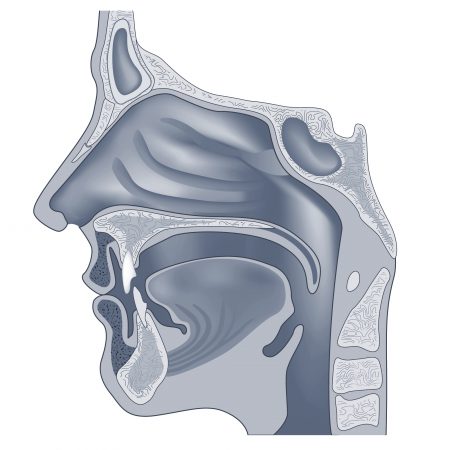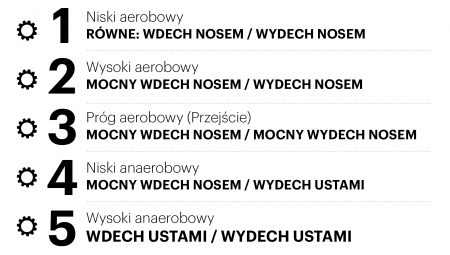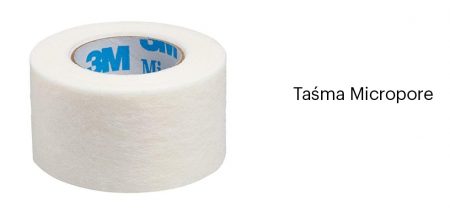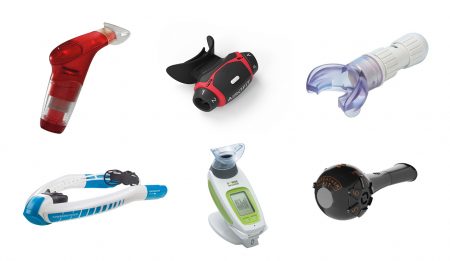
THE ROAD TO HEALTH SERIES: Breathing and Physical Activity – part I M. Petrus
We have built strength, improved endurance, condition, we’ve been working hard on speed and dynamics, we care about posture and have a good diet plan. However, there’s still one thing missing. One element that is with us all the time, 24 hours a day: our breath. Few people wonder how they breathe and realize that it has a significant impact on their health. It is this problem that Martin Petrus wants to focus on in today’s first post on the topic from the series The Road to Health. Did you know that…? 🙂
Breathing techniques in sport are not a new invention. In 1952, Emil Zátopek won 3 medals and was unbeatable at the Olympics in Helsinki. Why? An important part of his preparation was hypoventilation training, in which normal breathing was alternated with breath hold. Zátopek used this technique intuitively, but he achieved remarkable results.
In the 1970s, James Counsilman introduced a limitation in the number of breaths in swimmer training. The high efficiency of this method meant that in the 1980s the effects of hypoventilation were scientifically investigated. In 2000, Dr. Xavier Woorons proposed his version of training in which you not only increase the amount of carbon dioxide in the blood, but also lower the oxygen level. This way, you simulate high altitude training without the need to be in the mountains. In 2015, Patrick McKeown published the book “Oxygen Advantage” in which he proposes a very consistent method of breathing training which increases the body’s efficiency. More and more coaches in the world, such as Brian MacKenzie or Laird Hamilton, already follow very similar rules.
Three categories of exercises
There are many breathing techniques and depending on the need, we can find a specific sequence that will have a specific effect. To better understand the purpose of specific exercises, I decided to create three categories: Efficiency, Regeneration and Mind. Each breathing exercise can be assigned to a specific category, but will of course also work to a lesser extent in the other categories. If, for example, we go through a technique that aims to train our focus, it will of course also affect the acceleration of regeneration and improvement of efficiency.

Therefore, if we consider creating a breathing program, we should consider who we are working with. Breathing exercises will be of great benefit even for a person with very little physical activity. A large part of the population experiences problems related to the respiratory system, e.g. apnea, shortness of breath, lack of energy, stress, but also more serious ailments, such as asthma, sleep apnea, inflammation of the upper respiratory tract.
On the other hand, people who do sports regularly usually enjoy better health, more energy and physical fitness. For them, breathing techniques can also be of great help. Not only will it be easier to exercise, but it can also reduce the risk of injury. Inadequate breathing during physical activity can lead to ailments such as exercise-induced asthma or posture disorders.
Professional sport
Even when we are at the highest level, there’s always something we can improve. A few years ago, I had a contact with an Olympic rowing machine athlete who, after introducing very subtle changes in breathing, noticed an improvement in his results during a 2 km test – at the highest level of professionalism, we often look for just these fractions of seconds. Various specialists work for an athlete’s success: a motor preparation trainer, a strength development trainer, a masseur, a dietitian, a psychologist, and a sleep specialist. They all look for niches where they can make subtle improvements to gain a competitive advantage. Breathing training can give us an advantage at every level, no matter if we are a professional or an amateur. Due to the fact that breathing is one of the most basic functions of our body – it will always affect our performance.
Breathing techniques are not sports specific. If we only move, we can expect positive results. The effectiveness of your breathing training will depend on your baseline level and the time you spend practicing. The minimum commitment is 20-40 minutes a day. When introducing high-intensity breathing practices, we must remember that this is an additional burden and the training must be slightly modified. The plus is that even when an injury does not allow us to force our body, we can still stimulate our body with our breath and thus stay in shape.
The golden rule is to only practice breathing during training. JIf during a competition our focus on breathing distracts us from what we have to do at the moment, the benefits of breathing will be disproportionate. So we try to make what we practice during the training become involuntary and natural.
Nasal breathing
The fact that nose breathing is much healthier than mouth breathing was mentioned even in ancient texts. In the 1980s, Dr. Buteyko began to successfully treat ailments such as asthma or hypertension by teaching nose breathing. Why? Because the less we use our nose to breathe, the more it will “block”. A vicious cycle then begins: a blocked nose leads to us using it even less. Meanwhile, our upper respiratory tract, i.e. the nose, slows down the air flow, which can positively affect the absorption of oxygen (up to 20% more). We breathe more deeply and slowly with our nose, and we activate the diaphragm more. We also get amazing air filtration benefits – not only from pollutants but also from pathogens. We regulate the temperature of the inhaled air so that it is more beneficial for the lungs. If we are in a cold environment, the nose will warm the air, and if the temperature is hot, the air will be cooled. Breathing through the nose moisturizes the respiratory system and there is less water loss, which may be important in ultra sports, where we have limited access to water. Nasal breathing will also activate more diaphragmatic breathing, which is also an important part of healthy functioning.
Another benefit of nasal breathing is nitric oxide. It is a gas produced by our paranasal sinuses that not only regulates blood pressure but also fights pathogens such as bacteria, fungi and viruses. When we breathe through the nose, we inhale more nitric oxide with the air. This gas also helps in better absorption of oxygen by dilating blood vessels and bronchi. Breathing through the nose can also save us from ailments that may prematurely end our sports career. Excessive mouth breathing can contribute to conditions such as poor posture (head tilt), inflammation of the upper respiratory tract, asthma and sleep apnea in the long term.

When should you breathe through your nose?
If possible, all the time. The exceptions are when our physical activity requires mouth breathing – that is, a moment of high intensity, and when we perform specific breathing practices that involve mouth breathing. I often come across the opinion that during exercise we are unable to provide the right amount of oxygen by breathing through the nose. However, studies have shown that we can act at 90% of our maximum intensity for a short time. This means that if we start physical exertion and breathe through our mouths immediately, it may be due to our habits rather than the actual need for oxygen. It may also be associated with poor tolerance to carbon dioxide.
In many cases, however, we can extend the time we breathe through our nose. During physical activity, we can, for example, follow the Running System, which was proposed by Brian MacKenzie.

In this case, we operate the breath like gears in a car. One, two, three, then, if the pace increases, it is four and even five, but when we slow down again, we go back to four and then maybe even to one. Our nervous system is very sensitive to the pace of our breathing. JIf we start breathing to the maximum from the very beginning of exercise, we can quickly exhaust our energy resources. The longer the effort, the better this type of progression will work. With very short and intense activities, it may not make any difference. In many cases we will have to compromise, as with certain movement sequences our priority will be stability, which can actually be affected by changes in breathing. In this case, we forget about the “gear system” and breathe in such a way as to ensure maximum stability.
What if we can’t breathe through our nose?
If our nose is slightly blocked then – almost immediately – we will feel a shortage of air, which will cause mouth breathing. The principle is simple: when our upper respiratory tract is not ventilated (that is, we do not use it), then it becomes even more blocked and the vicious circle begins. JHowever, if we are able to take a few breaths through our nose, it means that we are able to breathe this way for the rest of our lives. If it is possible to breathe with the nose, but it is very difficult for us, we should do everything to bring more air through it. In addition to traditional methods (such as rinsing or inhalation), we can also try special patches or expanders that expand the nasal passages.

A very simple way to learn to breathe through your nose all night long is to…, as fun as it sounds, put tape over your mouth. You can get specialized plasters on the market, but paper medical plasters are just as good. Many people – even if they have initial concerns about using tape – get used to it very quickly. During training we can also try this kind of taping. Also, if we want to train nose breathing, we can tape our mouths and check what intensity we are able to reach.

Diaphragm
It is our main breathing muscle and one of the most important muscles in the body. The diaphragm is situated between the chest and the abdominal cavity and separates these two spaces. When we inhale, the diaphragm lowers a few centimeters, creating a pressure difference in the lungs. This difference in pressure draws air into the lungs as soon as the diaphragm relaxes and the air is pushed out of the lungs. This diaphragmatic breathing is classified as normal. Excessive upper chest breathing is associated more with agitation, stress and panic, while diaphragmatic breathing is associated more with relaxation and regeneration. Diaphragmatic breathing plays a very important role in the regeneration process, and even studies show that normal diaphragmatic breathing will activate the parasympathetic nervous system more, lower cortisol levels, increase melatonin levels, reduce oxidative stress, and reduce free radicals. The diaphragm also has a very important stabilizing function as it affects posture.
Strengthening the diaphragm can be one of the elements that improve performance. Research has shown that if the diaphragm becomes “tired” as a muscle, it will start to draw blood from the legs.
There are several methods that can help us strengthen our diaphragm. For example, vacuum exercises, which were once popularized by Arnold Schwarzenegger, are perfect for this. We can perform them lying down, on all fours, standing or standing with a slight forward bend. The principle is usually similar – we exhale completely, hold the air after exhaling, and suck the stomach towards the spine. I also found a variant where we exhale through pursed lips, adding tension to the abdominal muscles. We can stop the pulled abdominal muscles for a moment or even add a pulsing or spinning movement.

Using a device that slows down the airflow can also be a good exercise. Because when we breathe through a mouthpiece that restricts airflow, our diaphragm has to do a lot more work. Some athletes also use this type of device to warm up before strenuous activity.

Another option is an exercise known as Breath of Fire. It is a dynamic accelerated breathing where each time we exhale, we pull our belly against the spine. After that, the inhalation is passive, we just let the air return to the lungs. When we perform a dozen or even several dozen of such repetitions with a frequency of one breath per second or faster, we can immediately feel the results.
We already know how the breathing process works, what helpful tools we can use to improve its quality, and how important it is in our lives. If you would like to learn which breathing techniques to use to improve your efficiency and concentration, and support the regeneration process, you will soon find out in the second part of the article ?










Comments No Comments
Join the discussion…